Brattyajan Resource Centre (BRC)
Brattyajan is a Bangla word that best defines the communities that are excluded from social relations, marginalized and considered social outcasts.
Marginalized and excluded communities including the indigenous peoples constitute a significant percentage in the hugely Bengali-majority Bangladesh, a country of 165 million people. Those excluded, socially and economically, and discriminated against, for their identity, captive situation, occupations, casteism, culture, geographical locations, and various other reasons, come from among both religious and ethnic minorities and the majority communities. Many of them live on the fringes of the country, deprived of equal opportunities and facing wide-ranging social, economic and political disadvantages.
It is true that Bangladesh has made commendable achievements in addressing the challenges of poverty, which has declined to 20.5% in 2018-19 and extreme poverty, which has declined to 10.5% during the same period (Poverty and Extreme Poverty Rate of Bangladesh, Bangladesh Bureau of Statistics 2018-19). But the size of poor and extreme poor is still quite large (around 40 million people). Poverty, therefore, remains to be a huge challenge for the society, the state, and the development actors. Such level of impoverishment and also disadvantages and marginalisation that are multi-dimensional realities, can somewhat be linked to exclusion and political alienation.
The marginalized and excluded among the citizens of Bangladesh include different occupational communities who are victims of casteism, ethnic or indigenous groups, tea plantation workers and their communities, Bede (gypsy), Bihari, sex workers, transgender (Hijra), Kaiputra or Kawra (a pig-rearing community), Jaladas (a seafaring fishing community living in the coasts of Cox’s Bazar and Chattogram), disabled and other smaller excluded croups. These communities remain largely excluded and marginalized because they do not equally enjoy their legitimate rights as citizens. They face triple challenges of poverty, vulnerability and exclusion in terms of leading normal life, secure jobs and income, resources, access to loans, housing, education, skills, cultural capital, welfare state, citizenship and equal rights in the eyes of law, democratic participation, human treatment and dignity.
Given that the number of poor and extreme poor is still large continued anti-poverty efforts are essential. In attention to the poor and extreme poor, what is not adequately attended can be called poverty’s third frontier—excluded and marginalised communities—that SEHD and its partners have worked with for the past two decades.
How to Address Exclusion and Marginalization Challenges?
Addressing this third frontier of poverty, viz., exclusion and marginalisation, requires a multi-pronged approach as championed by SEHD and its partners. The multi-year research and consultations pursued by SEHD and its partners over the preceding years have underscored the critical need for making the excluded groups statistically visible through credible research as an essential first step and clearly mapping their issues and agenda to scale up policy and programmatic attention. It is indeed with this objective in mind that SEHD and its partners have initiated Brattyajan Resource Centre (BRC) with a great number of research outputs in hand from the past projects supported by the European Union and ICCO cooperation in particular. Brattyajan is a Bangla word that best defines the communities that are excluded from social relations, marginalized and considered social outcasts.
The Targets of BRC
The major marginalized, excluded and social outcast communities (six million people) that are the targets (final beneficiaries) of BRC are:
Indigenous peoples (ethnic communities): According to the latest official list ([last updated through a gazette notification published on 23 March 2019], the number of ethnic communities stand at 50 (11 in the CHT and 39 in the plains). The 11 indigenous communities that inhabit the Chittagong Hill Tracts (CHT) are Chakma, Marma, Tripura, Lushai, Bawm, Pangkho [also spelled as Pangkhua or Pangkhu], Mro, Khumi, Chak, Khyang, Tangchangya, and Rakhine in Cox’s Bazar. Ethnic communities on the official list (outside the CHT) are: Bormon, Dalu, Garo, Hajong, Khasi, Koch, Kol, Monipuri, Munda, Oraon, Pahari/Malpahari (Paharia), Rakhine, Santal, Bagdi/Bakti, Banai, Baraik/Boraik, Bhuimali, Kharia (only in tea gardens), Bhumij, Ganju, Gorait, Hodi, Kondo (only in tea gardens), Kora, Lohar (only in tea gardens), Mahali/Mahle, Mahato/Kurmi Mahato/Bedia Mahato, Malo/Ghashi Malo, Mushohor, Patro, Rajwar, Shabor, Teli, Turi, Gurkha, Bedia, Ho, Bhil and Kharwar/Kherwar.
According to SEHD research findings there are a good number of small ethnic groups in the plains not included in the government list. These groups are: Bhuiya, Bindumondol, Buna, Chowhan, Ghatual/Ghatuar, Hajra, Hari, Kadar, Kairi, Kalwar, Karmokar, Koda, Modok, Noonia, Pal (also known as Kumar), Rajbhar, Rajbongshi, Robidas, and Tanti. Besides, there is a community that identified itself as Kshatriya. The government estimate of the population on the official list would be below two million while SEHD estimates them at around 2.5 millions.
Tea workers and their communities: There are 159 tea gardens in Bangladesh (excluding those in Panchagarh where tea cultivation started only recently). The majority of around 138,000 tea plantation workers and their total population of around half a million are non-Bangalee. The British companies brought them from Bihar, Madras, Orissa, Andhra Pradesh, Madhya Pradesh, West Bengal, Uttar Pradesh and other places in India to work in the tea gardens in Sylhet region. The misfortune of these indentured labourers started with their journey to the tea gardens. Deprived, exploited and alienated, the majority of the tea workers live an inferior life.
What is unique about the tea workers and their communities is that their occupation and alienation from the Bangalee majority give them a common identity as tea workers. But the reality is that they belong to many ethnic and caste identities—as many as 80—as has been mapped by Society for Environment and Human Development (SEHD).These communities speak 13 languages and represent diverse culture.
Harijan: Harijan is an occupational group or community. They are traditionally known as sweepers and many of them consider themselves as social outcasts or ‘Dalit’. The term, ‘Dalit’ is used to define the status of those who are outside the four varnas, which means they belong to the so-called fifth category in the Hindu casteism. They are untouchables even to the Shudras. They are the most neglected in society and they are the most deprived of all social privileges. The members of the Harijan community work as cleaners in the cities and pourashavas (municipalities) all over the country except for three districts of Chittagong Hill Tracts (CHT). Like the tea workers, the members of the Harijan communities were brought to what is now Bangladesh from India’s Odisha, Bihar and Uttar Pradesh regions during the British colonial period. Cleaning has been their main occupation for more than 200 years now. The Harijans with a population of around 100,000 are one of the most marginal communities who are afflicted with a variety of social and economic problems.
Bede: The Bede is a Muslim gypsy (floating) community of Bangladesh. They travel from one place to another to earn a living for 10 to 11 months of the year and gather in 75 locations of the country to meet their families and other community members for one to two months. The estimated Bede population in Bangladesh is around 500,000 and around 5,000 caravans (groups) of Bede move from one place to another. The Bedes in general are very poor and the rate of literacy among them is very low as well. Most of them are landless and many live on khas (public) land and in tents. They hardly have access to healthcare services and other government benefits including Social Safety Net Programmes (SSNPs).
Sex workers and transgender: The sex workers are foremost among the social outcasts in Bangladesh and socially most marginal community cut off from social relations. A survey that SEHD carried out in 2018 found 3,721 female sex workers (FSWs) working in 11 brothels. However, the total number of FSWs is much bigger in the country—around 93,000. According to Ministry of Health and Family Welfare of Government of Bangladesh (2016) of these FSWs, 36,593 are based in the streets, 36,539 in residences and 15,960 in hotels. There is also an estimated 119,869 MSM (men who have sex with men) including transgender (TG)/Hijra (approximately 10,000). In a survey of the Ministry of Health and Family Welfare, Save the Children, and Joint United Nations Programme on HIV and AIDS on HIV and AIDS (UNAIDS) Bangladesh (2016) the large percentage of the TG/hijra (77.7%) identified themselves as sex workers. The Society for Environment and Human Development (SEHD) of 2017-2018 reveals that 73.33% of the respondents had been sold or dragged into this occupation by touts or intermediaries (dalal), 24.44% entered voluntarily and only 2.22% were born in the brothels. The same survey finds that 94.07% of the respondents have faced various kinds of torture such as rape, gang rape, abduction, and physical torture of various types.
Kaiputra (pig rearing community): Also known as Kawra, this community with a guesstimated population of 12,000 are despised in the society because they rear pigs, an animal ‘filthy’ to the Muslim majority. To most other people in society, they are considered untouchables. The Kaiputras, belonging to Hindu religion, live mostly in southwestern districts of Jashore, Satkhira and Khulna. SEHD carried out a detailed survey on the Kaiputra in 2017-2018. The survey finds that living in 41 southwestern villages, these people are engaged in traditional occupation, i.e. rearing pigs in the open fields. There are another 29 villages with Kaiputra concentration but they changed their occupation and stopped rearing pigs in the open. Such villages in Satkhira have turned into fishing villages. Because the neighbours neglect the Kaiputra, they try to hide their identity.
Jaladas: Occupationally marginalized and suffering from a degree of social untouchability, Jaladas are a traditional fisherfolk community—mainly seafaring but also engaged in riverine fishing in the coastal districts of Chattogram and Cox’s Bazar districts. This fisherfolk community lives along the coastline in around 60 spots from Teknaf in the southern Cox’s Bazar district to Mirsarai in northern Chattogram district with an approximate population of 150,000. Life and livelihoods of the Jaladas people are directly influenced by natural calamities. The children of the Jaladas families hardly give importance to education. Therefore, education is low among the Jaladas. Debt and landlessness are high among the Jaladas community.
Rishi: Historically the Rishis of Bengal are cobblers, leather workers and instrumentalists for generations. They are identified as Muchi, Chamar and Charmokar. These words are derogatory to the Rishis. In Bangla language, the words Muchi, Chamar and Charmokar mean the persons engaged in preparing hides and making and repairing shoes. The people of this ‘untouchable’ community mostly live in India’s Uttar Pradesh, Maddhya Pradesh and Bihar regions. They are one of the repressed or ‘Dalit’ communities among the Hindus in India. Currently, the Rishi people live in almost every district of Bangladesh. Their number is, however, higher in Jashore, Satkhira, Khulna and Bagerhat districts. Parittran, a rights-based organization of the Rishis in Bangladesh, Rishi population in the Khulna division alone is around 186,797. Power and Participation Research Centre (PPRC), with assistance and guidance of Parittran, carried out a research in 53 paras (clusters) or villages in Satkhira, Jashore, Khulna and Bagerhat districts of Khulna division and found 51,745 Rishis in 9,088 families.
Bihari: Approximately 300,000 Urdu-speaking Biharis live in 70 camps in 13 districts of Bangladesh. The Indian state of Bihar is the original home of most of the Biharis in Bangladesh. During the partition of the Indian subcontinent in 1947, these Biharis migrated to the then East Pakistan (presently Bangladesh). The Biharis sided with Pakistan during Bangladesh’s liberation war in 1971. After the war, a portion of them went to Pakistan and the rest remained stranded in Bangladesh. The High Court of Bangladesh, in a 2008 judgement, gave a ruling in favour of giving citizenship to around 150,000 Biharis who were minors in 1971 or born afterwards. However, they still live inferior lives in the camps without a permanent address and basic facilities. They are continuously deprived of most of their political, economic, social, and cultural rights.
Power and Participation Research Centre (PPRC) carried out a study [in 2017] covering 30 well-known camps and areas of Bihari concentration in 13 districts. It found their number to be 265,531 in these camps. Most of the camps are in Dhaka and 156,250 Biharis live in 10 camps in Dhaka, according to the research. Illiteracy is very high among the Biharis in camps, sanitation is very poor, and most do not own land and most are burdened with loans. Their access to Social Safety Net Programmes (SSNPs) is also low.
Other excluded and special communities: There are a number of smaller groups found among both Muslims and Hindus who are considered to be outcasts. These groups are: Teli (oil presser), Napit (barber), Dhopas (washer-man), Tati (weavers from Pakistan who speak Urdu), Darji (tailor), Hajam (unqualified doctors for circumcision), Mazi/Khottra (boatmen), Behara (carrier of bridal carriage), Kasai (butcher), and so on. Some of these groups such as Teli, Napit, Dhopas, Tati, Darji, and Hijra are also found among the Hindus.
Working Committee for BRC
A 25-member working committee with representatives from tea workers, ethnic communities, Rishi, sex workers, transgender, Bede, Harijan, Kaiputra, Bihari, and Jaladas communities has been created to guide Brattyajan Resource Centre (BRC). The initial working committee represents at least 14 organizations and networks that are also associates of the project and BRC. These associates are: Jatyio Adivasi Parishad (JAP), based in Northwest and an umbrella body of ethnic communities in this region; Jayenshahi Adibashi Samaj Kallyan Shangstha, based in Modhupur in Tangail district; Achik Michik Society (AMS), also based in Modhupur in Tangail district; Maulvibazar Cha Jangoshthi Adivasi Front (MCJAF), based in the tea gardens; Bangladesh Cha Sramik Union (BCSU), the lone union of around 100,000 tea workers; Sex Workers’ Network (SWN), a network of 29 organizations run by former sex workers and working for sex workers; Mukta Mohila Samiti (MMS) based in Goalanda, Rajbari and working with the sex workers of the biggest brothel of the country; Gram Bikash Kendra (GBK), a Dinajpur based organization paying attention to the ethnic communities of the North-eastern region that also partnered with SEHD and PPRC in past two initiatives; Christian Commission for Development in Bangladesh (CCDB), a development NGO, paying attention to the ethnic communities that also partnered with SEHD and PPRC in its past initiative; Stranded Pakistanis General Repatriation Committee (SPGRC), an organization of the Biharis; Paritran, an organization of the Rishis in South-western districts; and Bangladesh Horijan Yokkho Parishad (BHYP), the country-wide organization of the Harijans. These associated organizations represent majority of the excluded and marginalized communities of Bangladesh.
During the implementation of two projects for six and half years with support from the European Union and ICCO Cooperation devoted exclusively to the tea workers, the ethnic and excluded communities, more than 250 CBOs, CSOs, media, academics, research organizations and different state agencies and actors assembled, shared their insights and committed to pay greater attention to the excluded and marginalized communities and work together to address the exclusion challenges in Bangladesh.
Goal of BRC
The marginalized and excluded communities including the indigenous peoples are better protected and become equal and dignified citizens of the country.
Objectives of BRC
- The targets work together with other stakeholders in building group-specific agenda and strategies to claim their legitimate rights.
- The targets widely use tools and strategies developed/improved to maximize their social protection by increasing access to the state-funded Social Safety Net Programmes (SSNPs).
- The targets and stakeholders develop skills to replicate methodologies to generate knowledge resources and use them.
Publications on Marginalized and Excluded Communities
- State of the Excluded and Marginalized Communities (Book, English, PBK, 244 pages, 2019)
- Modhupur: The Vanishing Forest and her People in Agony (Book, English, PBK, 158 pages, 2019)
- Bangladesher Jounapalli O Jounakarmi: Halnagad Chitro-2018 (Brothels and sex workers of Bangladesh: Update 2018). (Survey report, Bangla, PBK 104 pages, 2019)
- Kaipurta: A Pig Rearing Community. (Survey report, English, PBK 80 pages, 2019)
- Harijans of Bangladesh. (Survey report, English, PBK 56 pages, 2019)
- Jaladas: A Seafaring Fishing Community. (Survey report, English, PBK 44 pages, 2019)
- Rishis of Khulna. (Survey report, English, PBK 64 pages, 2019)
- Bihari Community: Living in Camps. (Survey report, English, PBK 56 pages, 2019)
- Bede: A Nomadic Existence. (Survey report, English, PBK 64 pages, 2019)
- Slaves in These Times: Tea Communities of Bangladesh (Book, English, PBK 396 pages, 2016)
- On the Margins: Images of Tea Workers and Ethnic Communities (Book, English, PBK 232 pages, 2016)
- Lower Depths: Little-known Ethnic Communities of Bangladesh (Book, English, PBK 220 pages, 2016)
- Excluded Groups and Democratization (Book, English, PBK 80 pages, 2015)
- Survival on the Fringe: Adivasis of Bangladesh. (Book, English, HBK 644 pages, 2011)
- Bangladesh: Land, Forest and Forest People (Book, English, 3rd edition, PBK 284 pages, 2013)
- The Story of Tea Workers in Bangladesh (Book, English, PBK 320 pages, 2009)
- Cha Sramiker Katha (Update Bangla edition of The Story of Tea Workers in Bangladesh) (Book, Bangla, PBK 344 pages, 2009)
- Koch of Modhupur: A Demographic and Socioeconomic Survey of a Marginal Ethnic Community (Survey report, English, PBK 58 pages, 2015)
- The Chaks: Life on the Fringe (Survey report, English, PBK 96 pages, 2011)
- Chak: Pranter Jibon (Survey report, Bangla, PBK 88 pages, 2011)
- Bangladeshe Jounata Bikri: Jiboner Dame Kena Jibika (Sex Trade in Bangladesh: Livelihood at the Cost of Life) (Book, Bengali, HBK 213 pages, 2000)
- Sex-workers in Bangladesh—Livelihood: At What Price (Book, Bangla, English, PBK 276 pages, 2004)
Catalogues, posters, newsletters and brochures/keynote papers
- Brattyajan: The Lower Depths—Photography exhibition catalogue (Bangla, PBK, 112 pages, 2019)
- Brattyajan: The Lower Depths—Photography exhibition catalogue (English, PBK, 36 pages, 2019)
- Brattyajan: Lower Depths—Photography exhibition catalogue (English, PBK, 240 pages, 2019, available only in soft)
- The Story of Tea Workers—Photography exhibition catalogue (English and Bangla, 2009)
- Ambushed by Greed—Photography exhibition catalogue (English and Bangla, 2011
- On the Margins: Images of Tea Workers and Ethnic Communities—Photography exhibition catalogue (English 2016)
- Prantajan: People on the Fringe (Six issues of newsletter (i)16 to 20 pages each)
- Posters—27 on land, forest, social outcasts, excluded and marginalized communities, tea workers, ethnic communities, etc.
- Keynote presentations at Sreemangal Convention 2018— (i) Social, Economic and Political Protection of the Marginal and Excluded communities (Bangla; an updated English edition has been published in the State of the Excluded and Marginalized Communities), (ii) Debate on Dalits: A Perspective on Bangladesh (Bangla; an English edition has been published in the State of the Excluded and Marginalized Communities) and (iii) Convention report (Bangla, 46 pages, 2019)
- Keynote presentations at Rangpur Convention—(i) Forest, Land Rights and Social Protection (Bangla), (ii) Harijan: Housing, Education and Social Condition and (iii) Convention report (Bangla, 22 pages, 2018)
Capacity building resource materials
- Prashikkhon Upakaran O Sohayika: Prantik Jangoshthi Niye Karmaroto Karmi O Pratishthaner Sakkhamota O Dakkhata Bridhi (Training Manual and Guide: Scaling Up Capacity of Human Rights Defenders Attending the Marginalized and Excluded Communities (Bangla, PBK, 208 pages, 2019)
- Reporting Guide (Bangla 2nd edition, PBK 411 pages, 2015)
- Anushandhani Report: Paribesh O Manobadhikar (Investigative Reports: Environment and Human Rights), (Bangla, PBK 432 pages, 2008)
- Investigative Reports: Environment and Human Rights (English, PBK 388 pages, 2009)
Documentary films
- Sylvan Tears—39-minute documentary film on the destruction of Modhupur Sal Forest and suffering of forest villagers (English, 2019). Aranner Artonad (Bangla version of Sylvan Tears, 2019). Link: https://www.youtube.com/watch?v=7Vlxvbhn_ys&t=143s
- Pothey Pothey—32-minute documentary film on the life, struggle and transition of the Bede or gypsy community of Bangladesh (Bangla, 2019). Link: https://www.youtube.com/watch?v=LoP0VVNiiV4&t=1364s
- Matir Maya (Elegy on Land)—30-minute documentary film on soil and blood in North-western districts of Bangladesh focused on the Adivasis or ethnic communities (Bangla and English, 2016). Link: https://www.youtube.com/watch?v=2dUCYMJDLAI&t=101s
- Cha Sramiker Katha (The Story of Tea Workers)—44-minute documentary film on the tea industry and tea workers in Bangladesh (Bangla and English, 2009)
- Bagan Mayer Sushasthya, Bagan Mayer Suraksha—13-minute documentary film on the mothers of the tea gardens in North-eastern districts of Bangladesh who work in indecent condition, which affects the pregnant mothers most (Bangali, 2019). Link: https://www.youtube.com/watch?v=w2HIZZrZnRM
The above-mentioned publications and productions [and others of the applicants not mentioned here], together, are a comprehensive knowledge package on the excluded and marginalized communities that anyone can access. Some special features of these knowledge resources: (i) These are all based on extensive field work for over a decade under a number of initiatives, the last two supported by the European Union and ICCO Cooperation. (ii) In all household surveys, the respective community members [especially youth] had been involved in gathering household data. They were also involved in analysis of data. (iii) For production of the documentary films, books and survey reports, all excluded and marginalized communities have been extensively photographed and filmed. Use of photographs therefore make all the publications and productions easily readable and attractive. The published information and huge quantities of background materials and primary information still unused are useful for an encyclopaedic work on the ethnic communities of Bangladesh, tea workers, social outcasts and other marginalized communities. (iii) These knowledge resources are tools for human rights defenders, development actors, journalists, universities, government agencies and research professionals who want to attend the excluded and marginalized communities with intellectual clarity. (iv) These materials are excellent field guides to identify and reach the excluded and marginalized communities throughout the country. (v) These knowledge resources provide information, data, analysis, images, geographic maps and strategies widely discussed to deal with the excluded and marginalized communities. (vi) To make sure these knowledge resources have lasting impacts, all printed materials have been digitized and will be made available through a dedicated website.
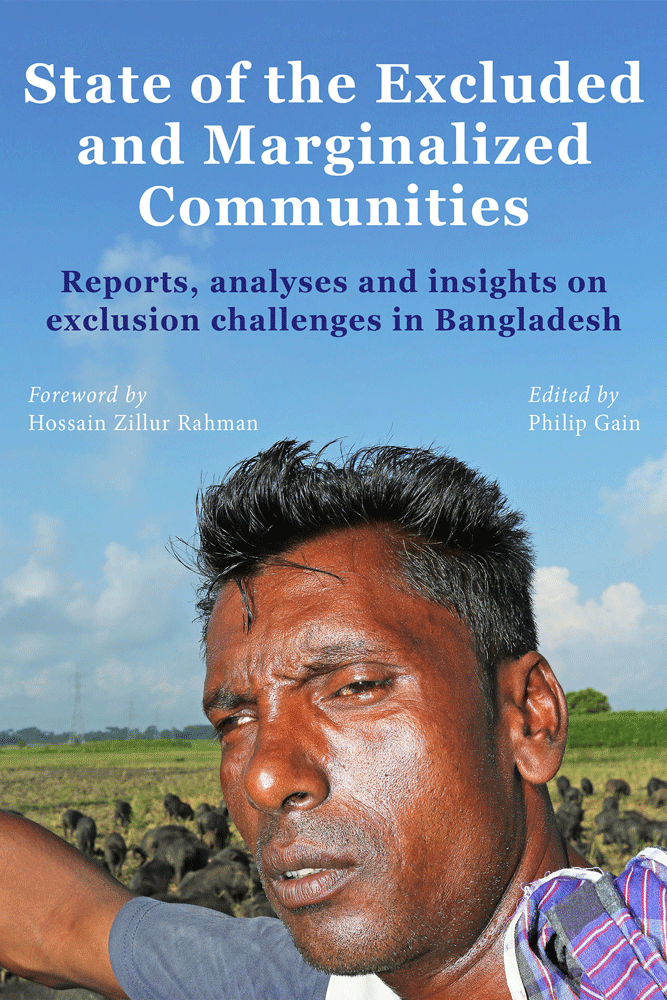
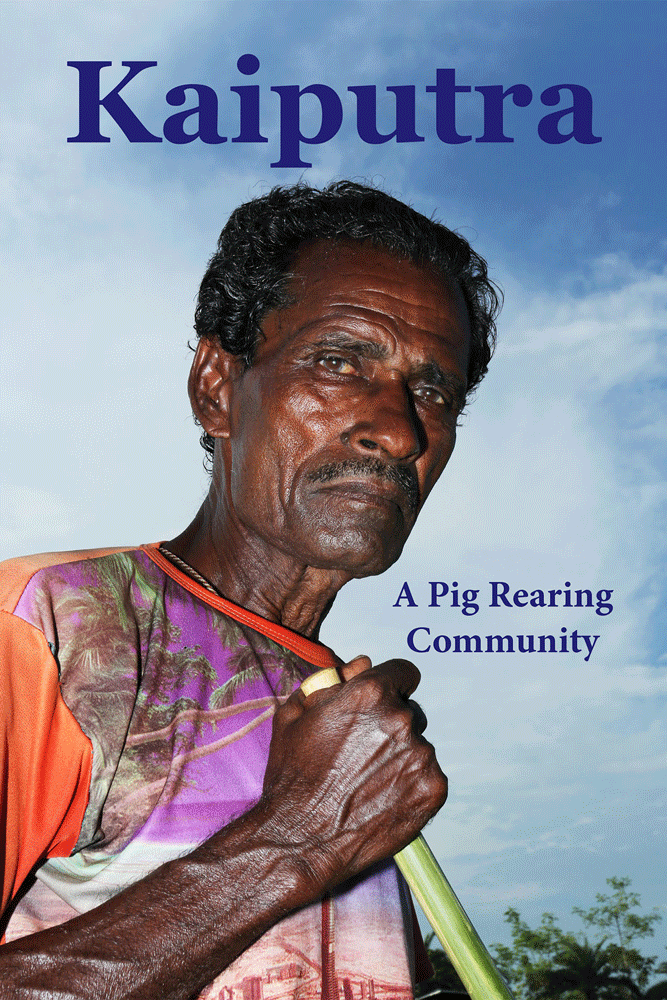
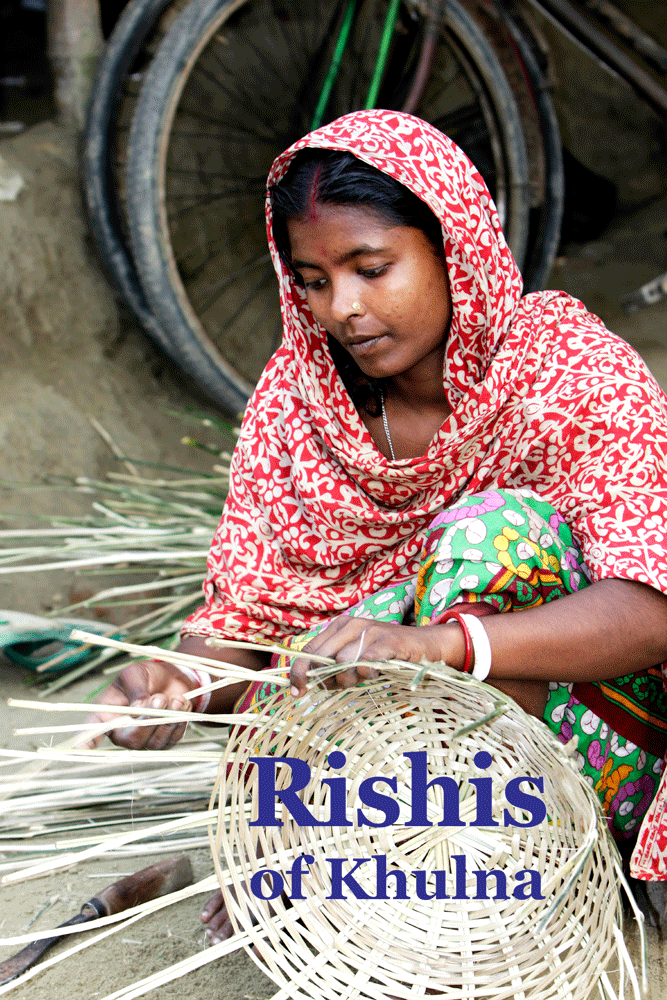
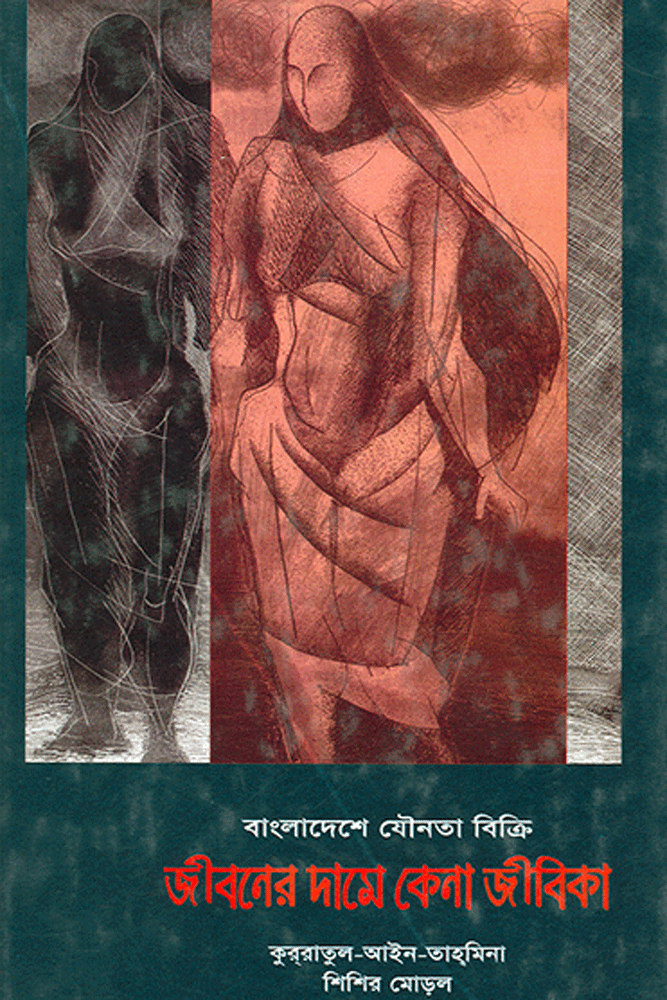
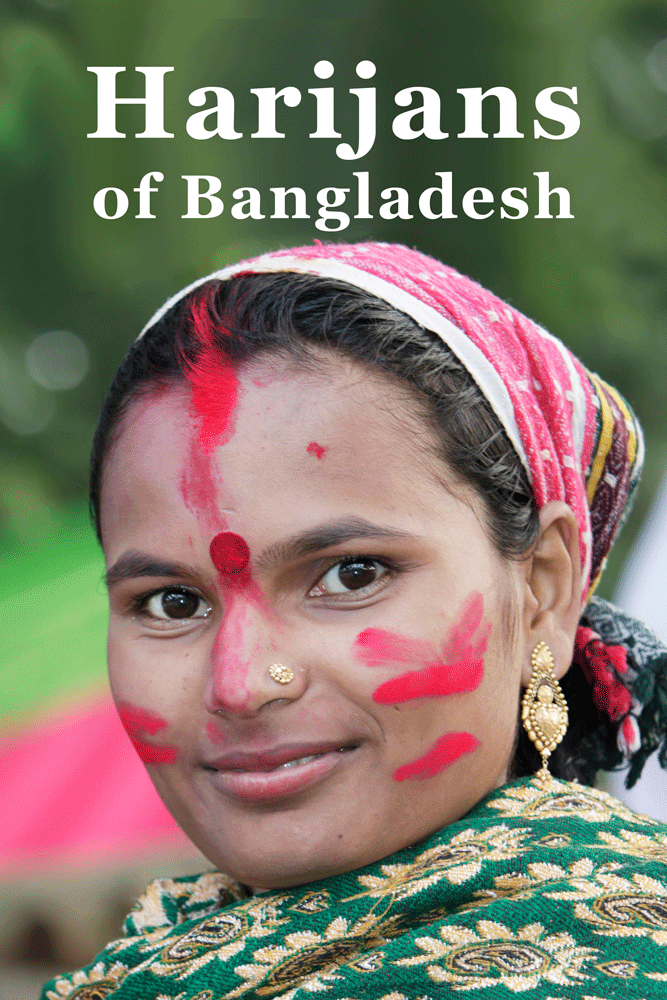
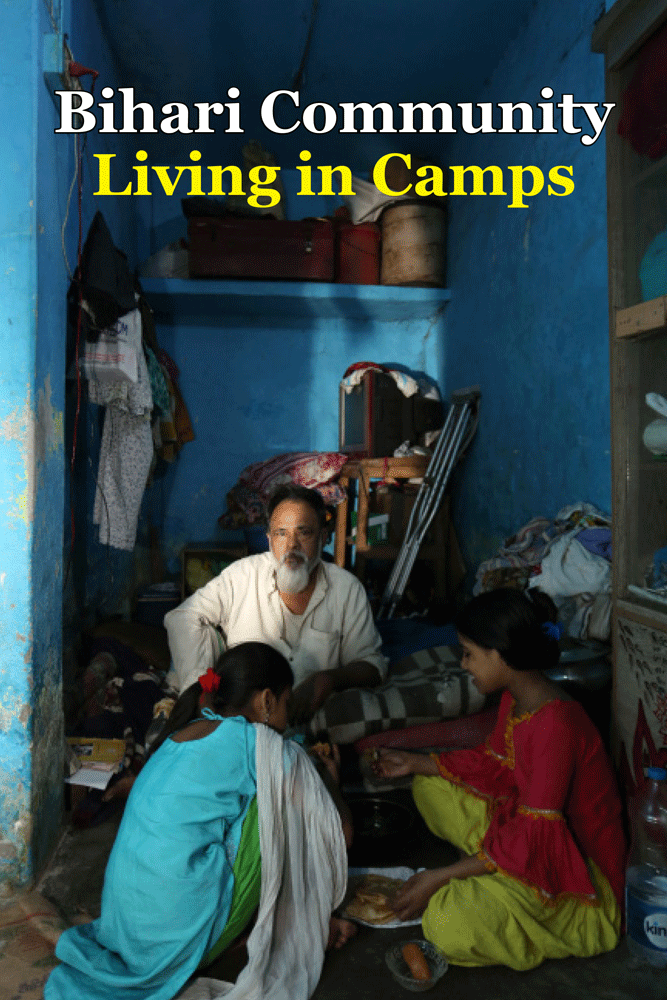
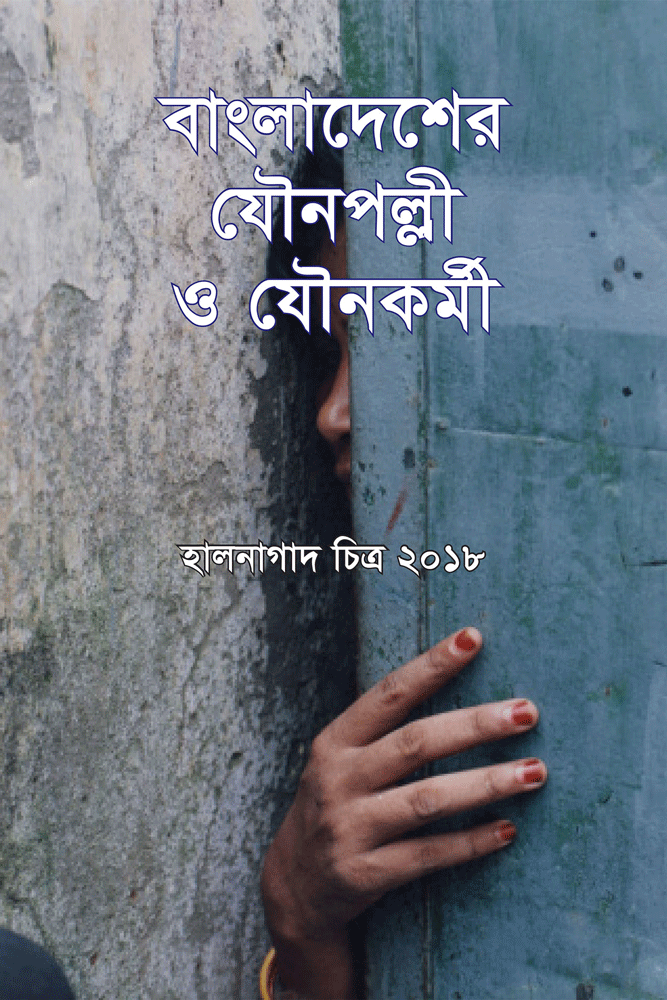
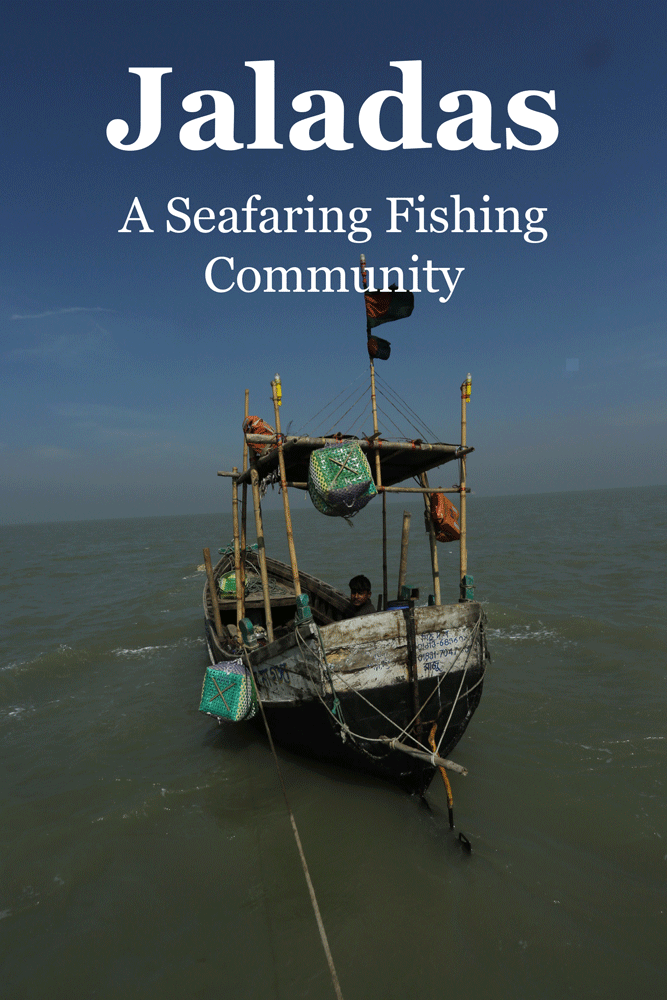
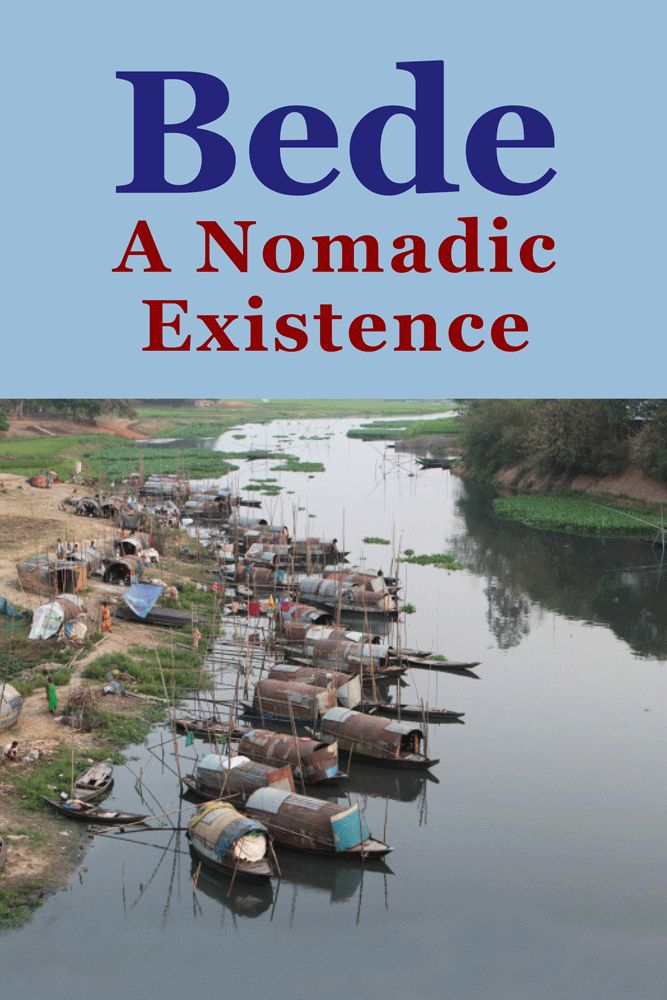
Map of the excluded, social outcasts and marginalized communities of Bangladesh
|
Categories |
Groups or Communities |
Population |
|
|
Government Statistics 2011 |
Other Sources (2010) |
||
|
Minority in terms of casteism and occupations that are despised |
Harijan (sweepers), Rishi, Jaladas (fishers who venture the deep sea and coastal rivers), Kaiputra (or Kawra who raise pigs in herds in the open particularly in marshland), Teli, Dhopa, Tanti (Urdu-speaking weavers from Pakistan), Dorjee, Hajam (unrecognised physicians who engage in Muslim circumcision), Majhi or Khotra, Behara (those who carry palanquin), Kasai, Dhopa, etc. |
No clear data available |
1,300,000 (approximate) |
|
Ethnic (indigenous) communities in the Chittagong Hill Tracts (CHT) |
Bawm, Chakma, Chak, Khumi, Khyang, Lushai, Marma, Mro, Pangkho or Pangkhua, Tripura and Tanchangya |
845,141 |
851,016 (according to C, S and other sources), 973,846 (M) |
|
Small ethnic communities of the plains land (government list) |
Official list before 19 March 2019: Bormon, Dalu, Garo, Hajong, Khasi, Koch, Kol, Monipuri, Munda, Oraon, Pahari/ Malpahari (Paharia), Rakhine and Santal.
Added to the official list (as of 19 March Gazettee): Bagdi/Bakti, Banai, Baraik/Boraik, Bedia, Bhil, Bhuimali, Bhumij, Ganju, Gorait, Gurkha, Ho, Hodi, Kharia (only tea gardens), Kharwar/Kherwar, Kondo (only in tea gardens), Kora, Lohar (only in tea gardens), Mahali/Mahle, Mahato/Kurmi Mahato/Bedia Mahato, Malo/Ghashi Malo, Mushohor, Patro, Rajwar, Shabor, Teli and Turi. |
740,600 (Government estimate of population before Gazette of 19 March 2019)
123,752 (SEHD estimate excluding the communities living in tea gardens; so far there is no government enumeration on these communities) |
889,819 (According to C, S and M)
SEHD estimate of population of plains land ethnic communities on the government list before 19 March 2019: 766,067 (C, S and M) |
|
Small ethnic communities of the plains land and outside the tea gardens (SEHD finds, yet to be accommodated in the official list). |
Bhuiya, Bindumondol, Buna, Chowhan, Ghatual/Ghatuar, Hajra, Hari, Kadar, Kairi, Kalwar, Karmokar, Koda, Modok, Noonia, Pal (also known as Kumar), Rajbhar, Rajbongshi, Robidas, Tanti, and Lyngam (a group among the Khasi). Kshatriya: There is a strong indication that a third of around 625,000 Kshatriyas in nine districts in the Northwest—Bogura, Lalmonirhat, Panchagarh, Nilphamari, Thakurgaon, Kurigram, Joypurhat, Dinajpur and Sirajganj—are Koch. |
|
258,776 (SEHD estimate excluding the families of these communities living in the tea in tea gardens)
Kshatriya population: 625,000 (SEHD survey) |
|
Small ethnic groups in the tea gardens. (Of these communities 23 are included in the official list and 16 of these 24 are found in the plains and two in the CHT). Communities found in the plains are: Bagdi/Bakti, Baraik/Boraik, Bhumij, Garo, Ganju, Gorait, Kol, Kora, Kurmi, Mahle/Mahali, Munda, Mushohor, Oraon, Rajwar, Santal and Teli. Communities from CHT found in tea gardens are Marma and Tripura. |
Almik, Bagdi/Bakti, Baraik/Boraik, Barma, Bashphor, Bauri, Been, Bhar, Bhokta, Bhuiya, Bhumij, Bihari, Bunerjee, Chasha, Chatri, Dusad, Garo, Ghatuar, Giri, Goala, Ganju, Gorait, Goswami, Gour, Goyashur (They are also known as Ashur), Hajra, Jhora, Kahar, Kairi, Kalindi, Kalwar, Kanu, Karmokar, Keot, Kharia, Khodal, Kol, Kondo, Kora, Kumar, Kurmi, Lohar, Mandraji, Mahle/Mahali, Majhi, Mal, Marma, Monipuri, Mridha, Munda, Mushohor, Naidu, Nayek, Nepali, Noonia, Oraon (also spelt Orang), Painka, Pashi, Jainta Patro, Phulmali, Pandit, Pradhan, Rajballobh, Rajbhar, Rajbongshi, Rajgor, Rajwar, Rautia, Reli, Robidas, Sadhu, Santal, Shabor, Sheel, Suklaboiddyo, Shobdokar, Tanti, Teli (also known as Pal), Tongla, Tripura, Patro (also outside of tea gardens) and Shobdokar (also outside tea gardens) |
|
415,622 According to Bangladesh Tea Board’s counting (2015). The enumeration includes 5,500 households of Bangalee workers |
|
Communities that are deprived of privileges and excluded and invisible due to variety of reasons such as occupation, culture, geographic locations and eviction from the land. |
Bihari |
|
300,000 (estimated) |
|
Bede
|
75,702*
|
500,000 (estimate of the Bedes) |
|
|
Female sex workers |
92,572** |
|
|
|
Transgender (Hijra) |
8,533** |
|
|
|
Kamar (blacksmiths), kumar/mrithshilpi potters), Napit (hairdresser/barber), makers of cane and bamboo produces, brassware producers and cobblers (shoe makers)—these communities are treated as marginalised communities by the Department of Social Services (DSS).*
The marginalized communities also include one percent of the country’s population who are registered disabled (according to non-government sources percentage of disabled is much higher). |
No census data available |
Potter: 151,598 Blacksmith: 138,193 Makers of cane and bamboo produces: 332,992 Napit: 330,484 Shoe maker: 160,785 Brassware producers: 10,519 Source: Administrative data of BBS, 2016. |
|
C—Estimate of the respective communities.
M—Counting by Mohammad Rafi (Rafi, Mohammad, July 2006, Small Ethnic Communities of Bangladesh: A Mapping Exercise, Panjeree Publications.
S—Estimated population based on a survey on socio-economic conditions of the ethnic communities such as Khumi (2014), Chak (2010), Khasi (2007) and Dalu (2014) by Society for Environment and Human Development (SEHD).
* Department of Social Services (DSS).
** National AIDS/STD Programme, Directorate General of Health Services, the Ministry of Health and Family Welfare and Save the Children. 27 June 2016. Mapping Study and Size Estimation of Key Population in Bangladesh for HIV Programs 2015-16.
